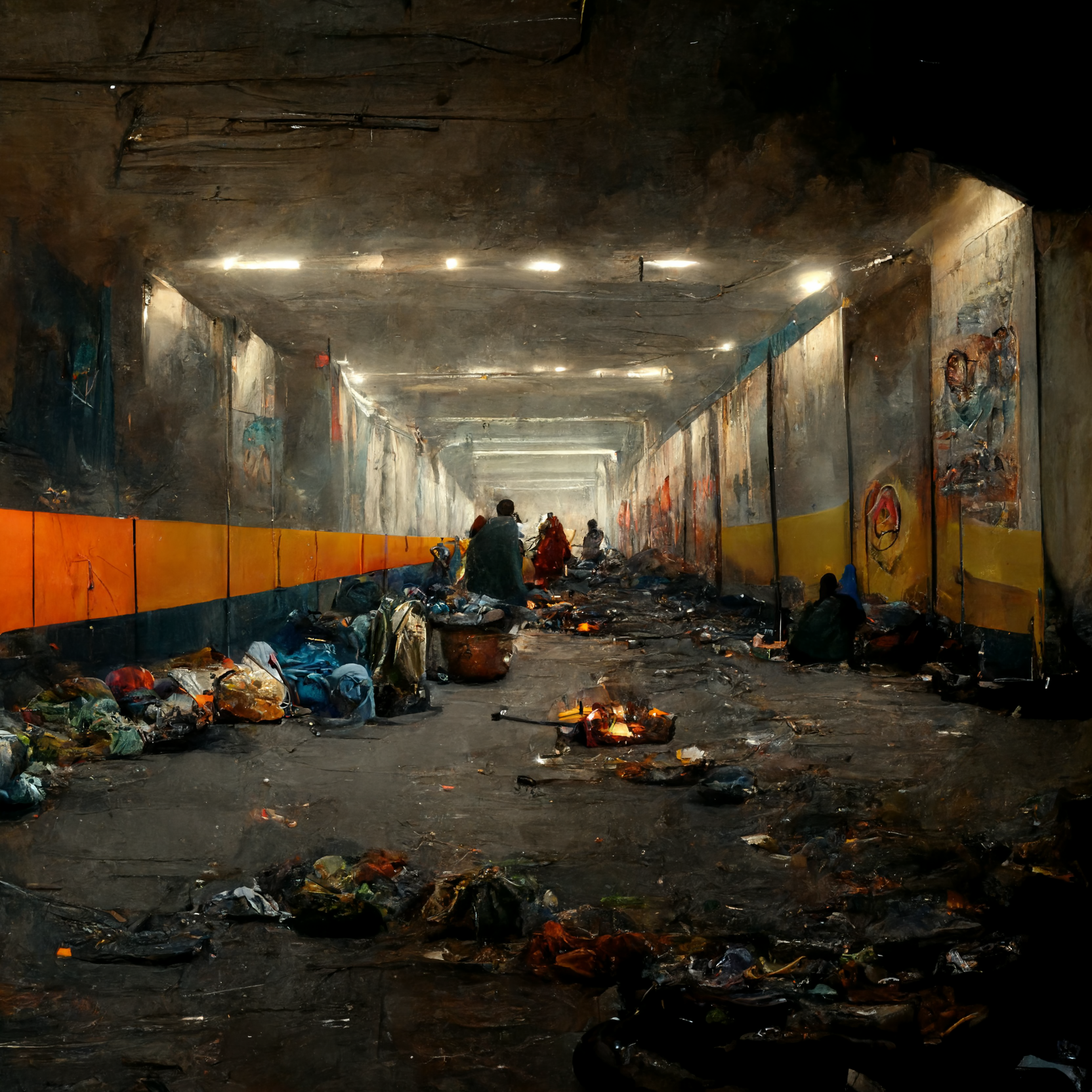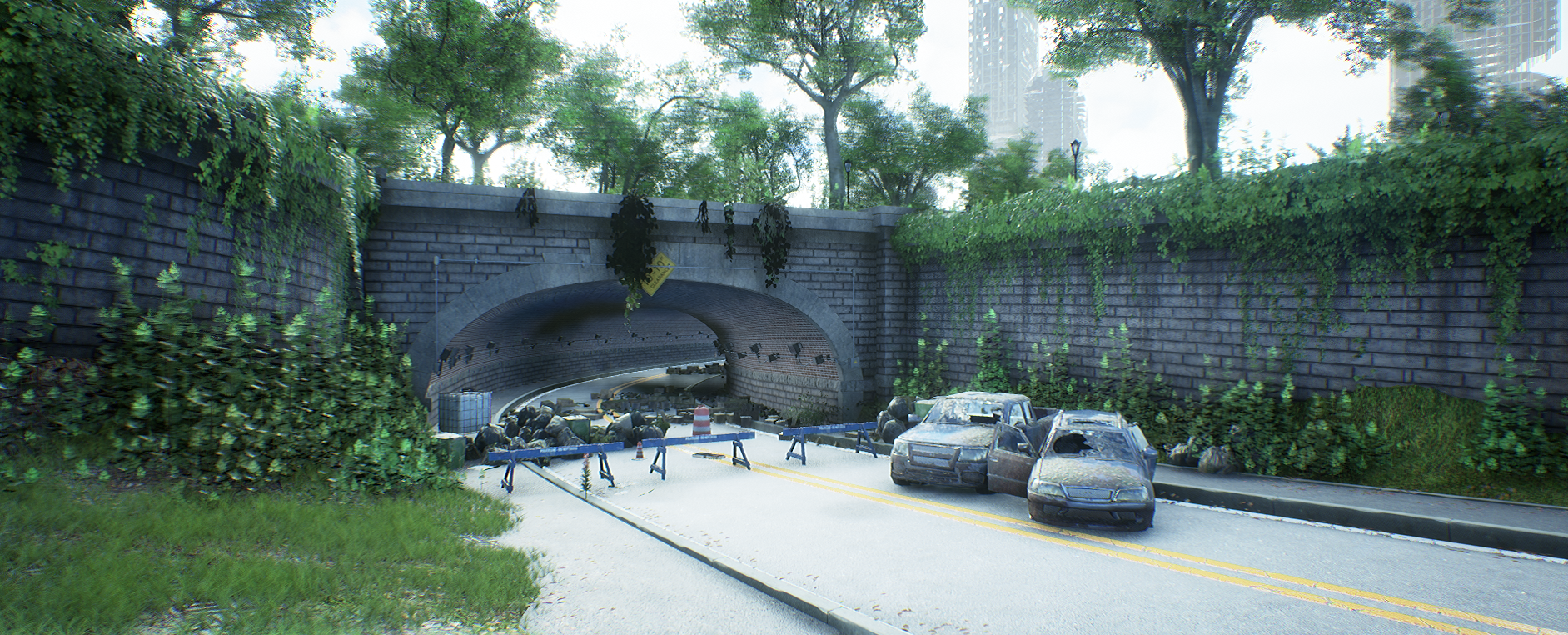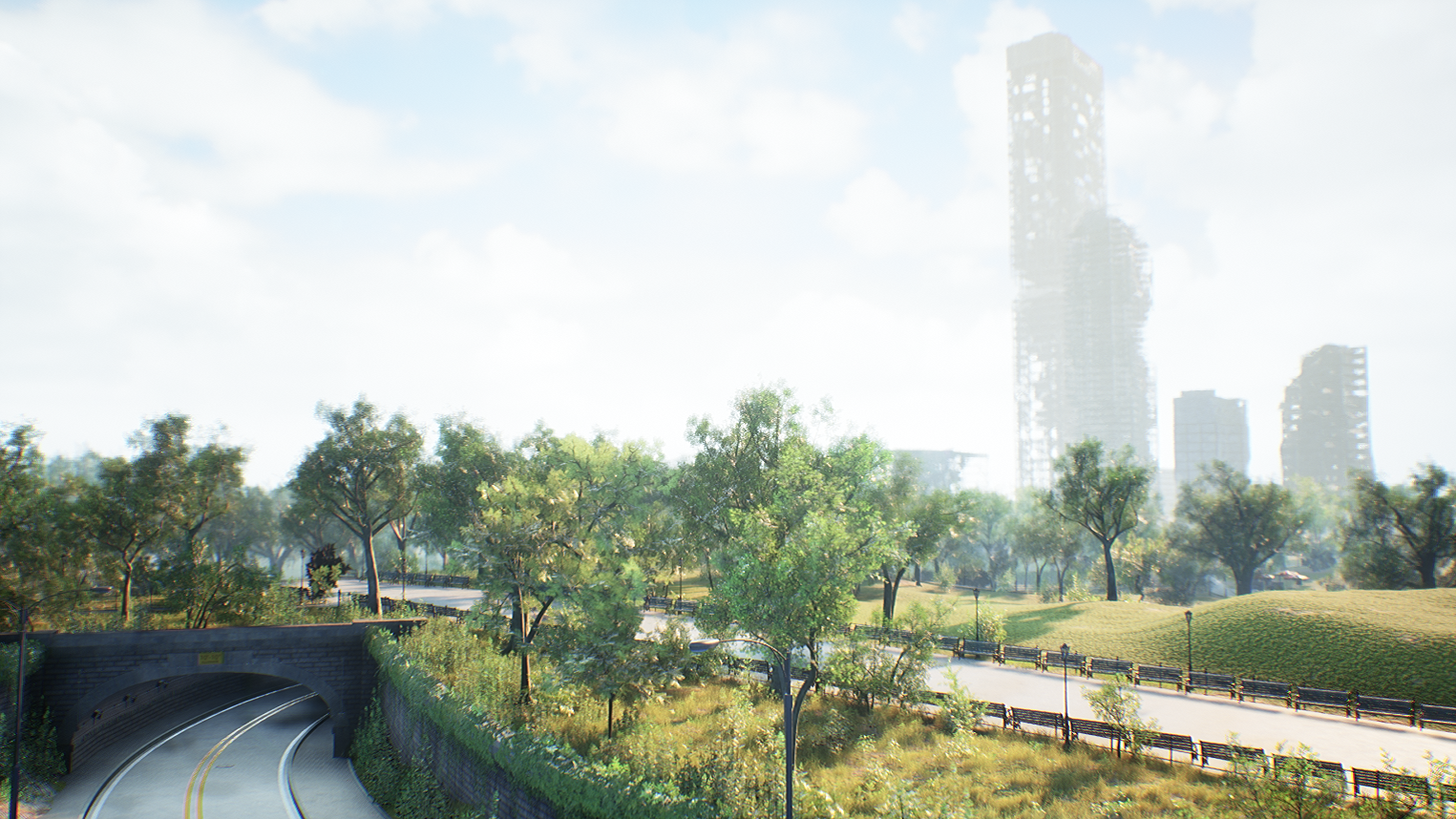New York - the Dead City and the Underpass
The underpass in New York is the first scene where we meet Jenna and get to learn about the interactions she has with Ryan Cordell.
Note: The underpass is a type of bridge that allows people and vehicles to pass beneath a road or railway. The underpass here in this story is littered with trash and debris, suggesting that it is not well-maintained or cared for - as expected in an abandoned city like the Dead City of New York. The trash includes debris from destroyed road surfaces, bulding materials and items such as food packaging, bottles and cans, and other forms of litter.
There are also homeless people present, known as Betas, as they are not Alphas, the people who are governed by the United Earth government. Betas are trying to keep warm building fires. This underpass is where Betas have set up camp, either temporarily or as a more permanent residence. The fires are small and contained, but are surrounded by makeshift shelters and other forms of makeshift housing. The overall scene is dirty, chaotic, and unpleasant, with the combination of trash and homeless people creating a sense of neglect and abandonment. It is a sad and unfortunate reminder of the challenges that some people face in finding shelter and basic necessities.
Backstory
New York was entirely ruined during the war, so is now considered dead city. People still live there but it's mainly homeless and diseased people who have nowhere else to go. The Dead City was entirely destroyed, and evacuated at the beginning of the nuclear exchange in the war. Most buildings were significantly damaged, as a result of an airburst nuclear missle that detonated over Wall Street. In the Dead City, buildings and structures outside of the immediate blast zone are in a state of disrepair, with many completely destroyed or reduced to rubble. The streets and other public areas are overgrown with weeds and other vegetation, and there is debris and other remnants of the destruction scattered throughout the city. The atmosphere in the Dead City is eerie and desolate, with just a few signs of human life or activity in notable areas, such as this underpass. The silence is unsettling outside of the habitation areas, only broken by the sounds of crumbling buildings, the wind, and other natural elements. Overall, the Dead City is a tragic and haunting reminder of the destructive power of nuclear war, and of the fragility of human civilization. It is a bleak and desolate place, with few signs of hope or renewal.Central Park was built in the mid-19th century. Construction on the park began in 1857 and was opened in 1858. Designed by Frederick Law Olmsted and Calvert Vaux, it covers 843 acres of land right in the heart of Manhattan. When the bombs fell during the final conflict, this popular destination was one of the few places where people could survive, taking shelter in the numerous underpasses and shelters. It was always popular with tourists and New York locals, and now it is the heart of the Dead City's habitable zone.
The popularity of Central Park before the war was primarily responsible for why so many New Yorkers survived - the bombs dropped at lunchtime on a bright sunny summer day. One of the main reasons it was so popular was its location in the heart of Manhattan, which made it accessible to many people, both those working and living there. Additionally, the park offered several great recreational activities and attractions, such as walking and biking trails, lakes and ponds, playgrounds, and sporting facilities. It was also home to famous landmarks like the Bethesda Fountain and the Strawberry Fields memorial. Furthermore, the park provided a peaceful and green oasis in the midst of the hustle and bustle of the city, making it a popular destination for people looking to relax and unwind.
Central Park was always considered a safe place to visit, at least during the day. Like most North American cities, however, there was always a criminal element that made use of the cover of trees and underpasses for nefarious purposes. Locals loved Central Park but were always aware of their surroundings and would almost always take standard safety precautions, such as staying in well-lit areas and avoiding walking alone at night. Overall, the park had a good reputation and was considered a family-friendly destination. There is a strong police presence in the park, and crime rates are generally low. Of course, it is always important to use your best judgment and to trust your instincts if you ever feel unsafe.






Comments